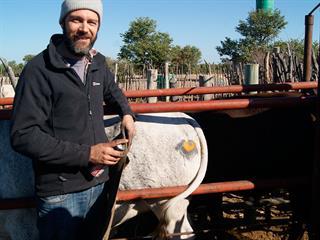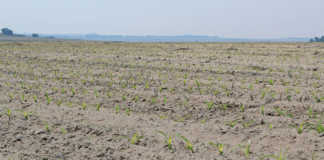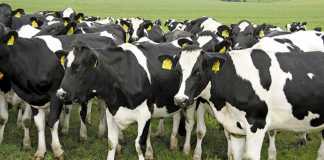
A reliable, effective and low-cost solution for the problem of livestock predation has been developed by Dr Neil Jordan of the Centre for Ecosystem Science, School of Biological, Earth and Environmental Sciences, at the University of New South Wales in Australia.
His solution to keep cattle safe from predators, such as lions, is low-tech and simple: paint wide-open eyes on animals’ rumps.
“I’ve been working with the Botswana Predator Conservation Trust for five years, and livestock-lion conflict is a huge issue in our study area,” he says.
According to Jordan, many farmers lack the tools to deal effectively with the problem, and the scientific community has failed to provide solutions.
“The idea came after some of our lions were shot in the village of Sankuyo, and I was at a loss to help. Sometime later, I was watching lions hunt impala and was struck by how important it was for the lions to not be seen by their prey,” he recalls.
Lions ambush their prey and rely on the element of surprise to ensure a kill. If they are spotted, they will often abandon the hunt, Jordan explains. This led him to explore the possibility of exploiting this behaviour to prevent attacks.
The idea is currently being tested in Ngamiland, Botswana, and there is interest from other parts of Botswana, Zimbabwe and Tanzania.
“We want to contain the experiment to a very small-scale for now. Once we have sufficient evidence of its successful implementation, we can roll it out more widely. We are currently working with one farmer at the livestock-wildlife interface.
We chose this farm because it suffered from an unusually high rate of predation last year when we began our pilot study,” Jordan explains.
For the pilot study, 23 cows out of a herd of 62 were marked with painted eyes on their rumps. Over a three-month period, none of the marked cattle were killed by lions, while three of the 39 unmarked animals were killed. In a second trial, half the herd will be marked and the other half not.
Simple application
The cows are held in a crush and marked on either side of their rumps with an eye-shaped stamp cut out of craft foam and coated with acrylic paint. Initial tests indicated no adverse effects from the paint.
The ‘eyes’ lasted for about three to four weeks before needing to be reapplied.
Email Dr Neil Jordan at [email protected].













